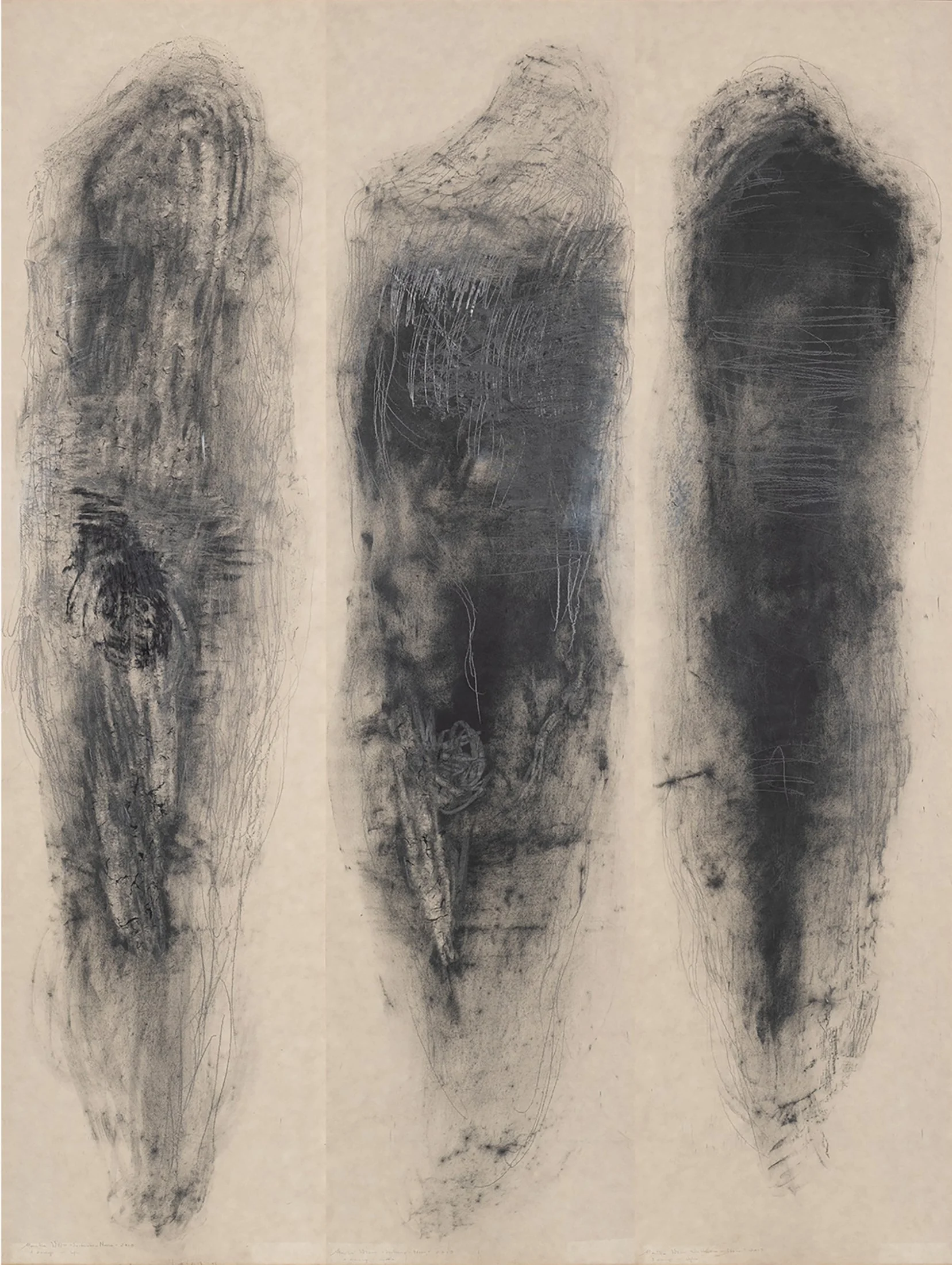sustenazo (nosze)
Sustenazo (Nosze) - right panel #3, 2010
Sustenazo (Nosze)
2010
graphite powder, charcoal, water, pencil on rice paper
triptych
72 x 14 inches each
photographic documentation by Bartosz Górka
collection: Centre of Contemporary Art Ujazdowski Castle, Warsaw, Poland
exhibited:
Monika Weiss-Sustenazo, Centre of Contemporary Art Ujazdowski Castle, Warsaw, curator Milada Ślizińska (2010)
Monika Weiss-Nirbhaya, Centre of Polish Sculpture in Orońsko, curator Weronika Elertowska (2021)
Artist Statement
Sustenazo (Nosze) is a triptych composed of 3 large-scale elongated drawings on rice paper which I created by lying the paper on top of found WW2 German stretcher (in Polish “nosze”) used to carry wounded people. The horizontality of traces is a direct result of trying to mark and stain the thin sheet of rice paper lying on an uneven and harsh surface of a stretcher. Sustenazo (in Ancient Greek “to lament together inaudibly”) is a cycle of works in projected video, sound, installation of German book published before 1945, performance, medical instruments, and large-scale and small-scale drawings. Sustenazo project was inspired by the forced overnight expulsion by German army of 1,800 Polish patients and medical staff of Ujazdowski Hospital which happened at the onset of Warsaw Uprising in 1944. Patients were carried out of the hospital on the stretchers into the streets of the burning city of Warsaw. Most didn’t survive.
During working on this larger project I felt there was a physical but also symbolic cruelty and absurdity in the act of “throwing out” a hospital, a place traditionally and transnationally understood as a site of healing, safety, and protection. By making this triptych I was hoping to point at the crime of war but without showing the trauma directly. The triptych maps the vurnelable site for the body. Marks and stains of graphite, charcoal and pencil connote holding and protecting akin to a shroud, as another form of writing language, beyond words.
- Monika Weiss
Essay Excerpt
In addition to recognizing the qualities of charcoal that adapts to the artist’s needs (its capacity to be held firmly, crushed, its ability to stain, and the symbolic associations), Weiss uses other materials with comparable purpose. Graphite powder for example, when mixed with water has properties similar to ink. The type of paper is also carefully considered. Since about 2005, Weiss has often worked on Japanese rice paper because of its transparency and ability to evoke the surface of skin, allowing her to double the metaphorical connotations when so much of her work revolves around the body.
- Mark McDonald, curator, The Metropolitan Museum of Art, Drawing Consciousness: Monika Weiss in Monika Weiss-Nirbhaya, Centre of Polish Sculpture in Orońsko, 2021, pp. 54 - 76 [to read the essay click here]
Sustenazo (Nosze) - left panel #1, 2010
Sustenazo (Nosze) - middle panel #2, 2010
View of the work in the exhibition Monika Weiss-Sustenazo at Centre of Contemporary Art Ujazdowski Castle (Centrum Sztuki Współczesnej Zamek Ujazdowski), Warsaw, Poland, 2010. Curated by Milada Ślizińska
View of the work in the exhibition Monika Weiss-Nirbhaya at Centre of Polish Sculpture in Orońsko, Poland, 2021. Curated by Weronika Elertowska





